Here at Food52, we love recipes—but do we always use them? Of course not. Because once you realize you don't always need a recipe, you'll make your favorite dishes a lot more often.
Today: Christine Rudalevige of the Family Fish Project demonstrates how to clambake like it's done in New England—from the comfort of your kitchen.
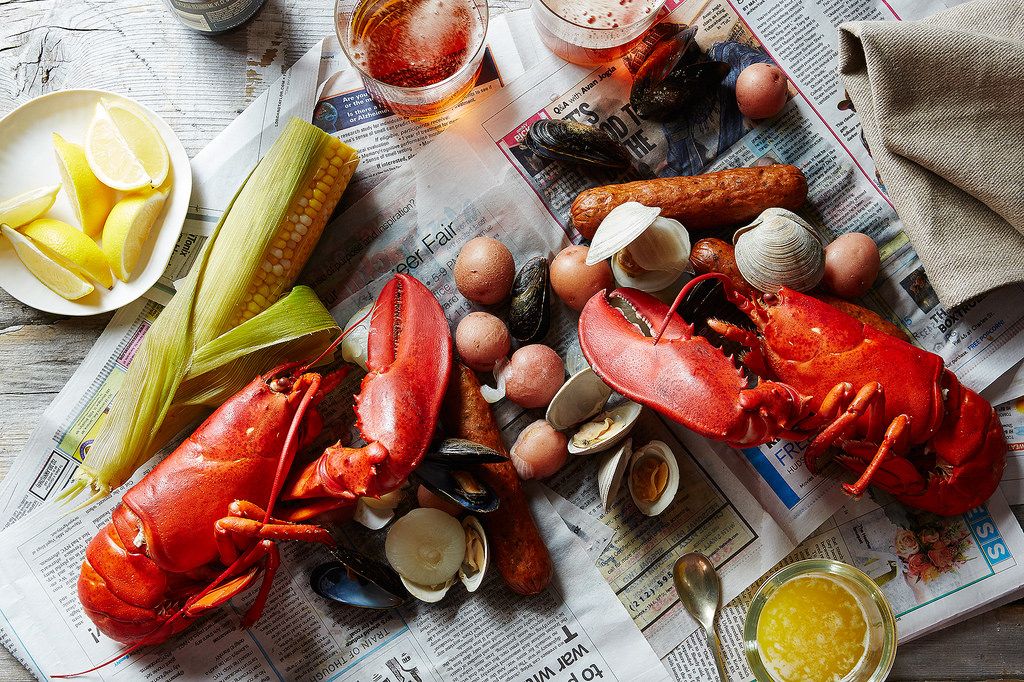
Like Farrah Fawcett’s hair in the 80s, New England clambakes are more about layering ingredients to achieve stunning voluminosity and less about following an exact recipe.
What they don’t quibble about is the fact that a clambake involves seafood—lobsters, steamers, little necks, mussels, and crabs—and complementary foodstuffs (potatoes, spicy sausage, and corn on the cob) layered over a pile of fresh seaweed, which produces copious amounts of steam as it comes into contact with rocks heated by a stack of wood fire. This mountain of food gets covered with a canvas tarp that's sealed in place with sand at the edges. Then there’s nothing left to do but wait about an hour before everyone gets more food than they can possibly eat.
More: A history of the clawsome lobster.
But what if you don’t have access to a beach, a shovel, firewood, rocks, fresh seaweed, and a tarp? Don’t you worry: You can pull off a clambake in your kitchen or on your grill without a recipe as long as you have a big pot, lots of seafood, and 45 minutes. Here’s how to do it:
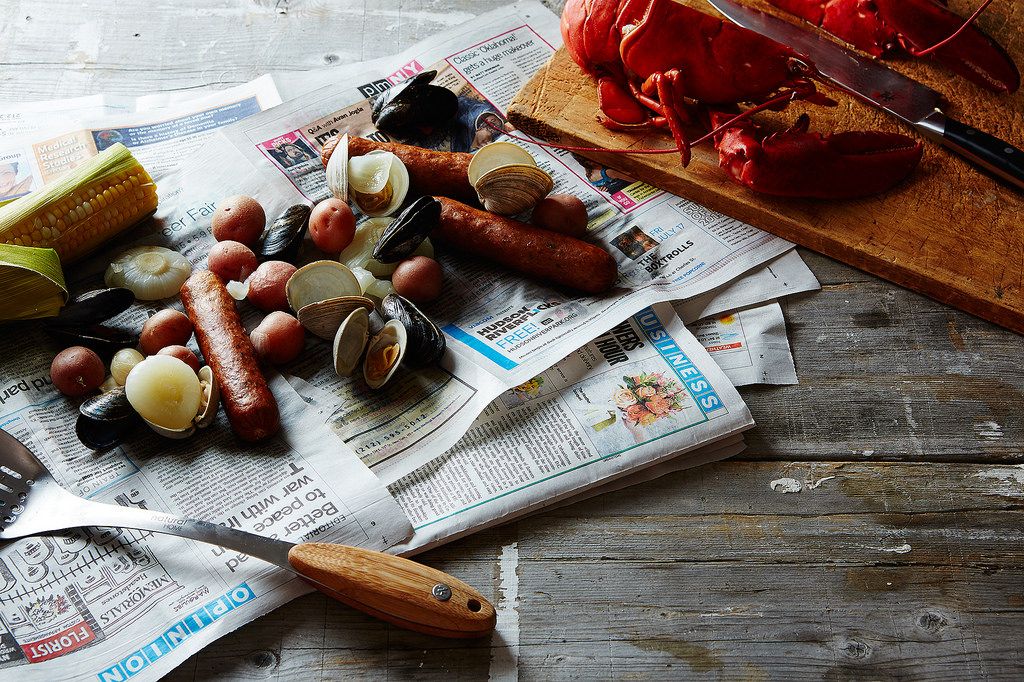
1. Gather your ingredients.
In her 1960 book How America Eats, veteran food writer Clementine Paddleford lays out the basic tenet of the clambake, saying “quantity is the essence.” So head to your fishmonger, farmers market, or grocery store and figure the following per person:
- Half of a decently sized lobster (or 2 clusters of frozen crab legs if you can’t get live lobster)
- 6 clams (hard shelled ones like littlenecks are best; soft shelled steamers work but the brittle shells require some care), which should be fresh, alive and cleaned.
- A second flavorful shellfish, like 6 mussels or 4 large or 6 small shrimp (head on if you can find them)
- 1/4 pound each of smoked sausage (kielbasa, linguiça, andouille or chouriço), cut into bite-size pieces
- Handful of potatoes (3 to 4 small new, 2 to 3 fingerlings, or 1 red bliss, quartered)
- Aromatics (2 or 3 cipollini onions, 1 garlic clove, a thickly sliced carrot, and/or a few thyme sprigs)
- 1 to 2 ears of corn
Don’t like corn? Skip it. Can’t find mussels? Don’t sweat. There’s enough in this clambake that missing a component or two won’t hurt the situation.
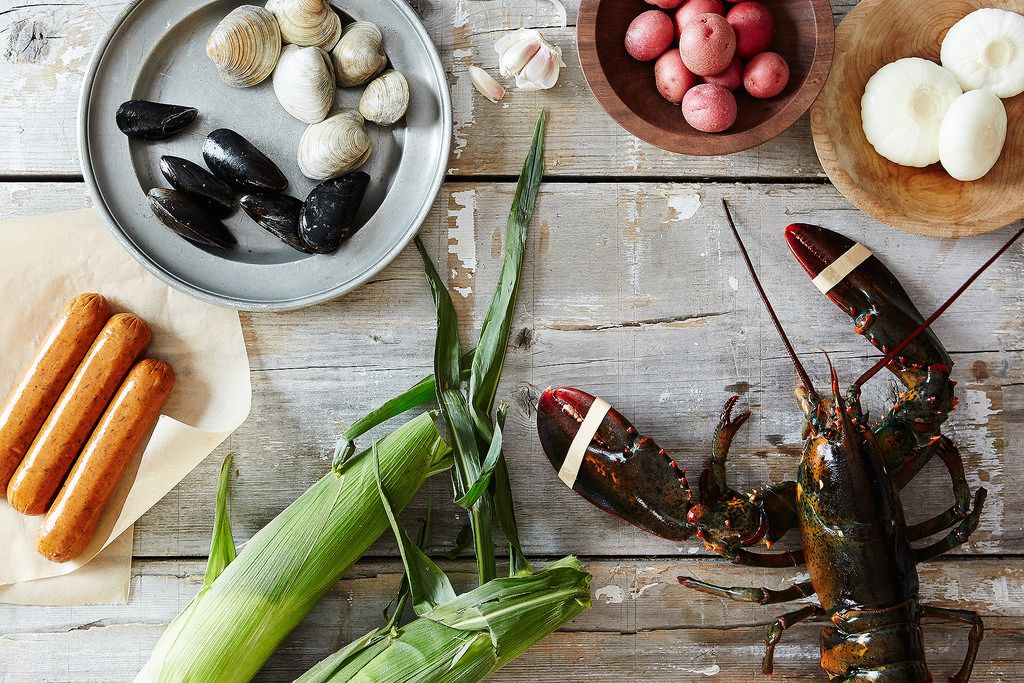
2. Grab your vessel.
If you’re clambaking in the kitchen, you’re going to need your biggest pot(s) to accommodate the seafood. A 20-quart lobster pot, or two 12-quart pots will do the trick for 4 people. If you’re using your grill, pull out the roasting pan you use to cook your Thanksgiving turkey.
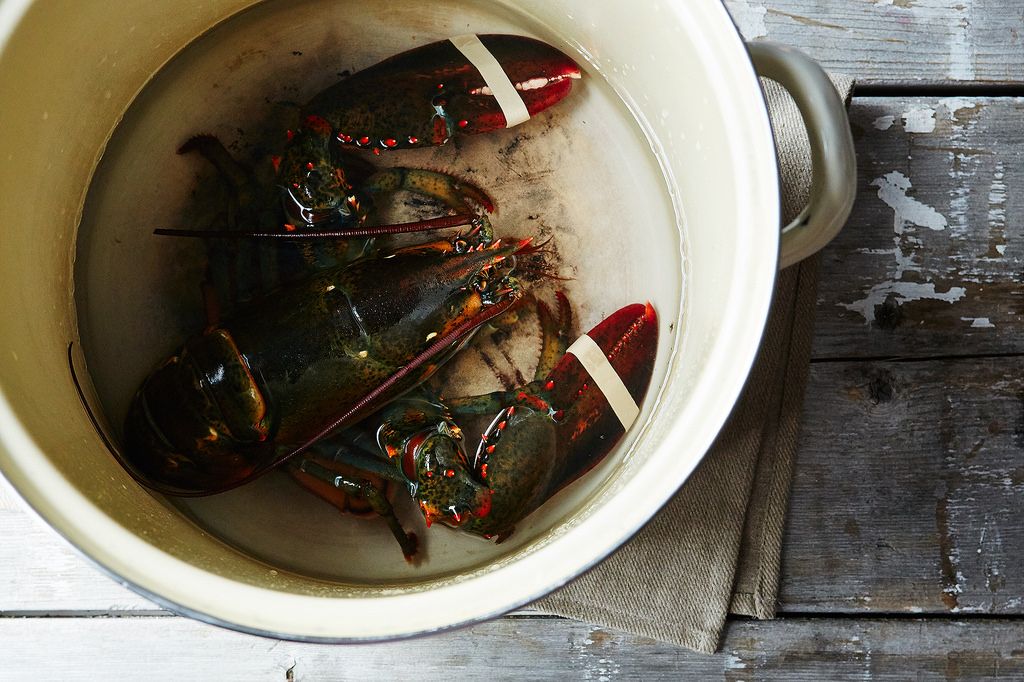
3a. Start cooking—on the stovetop.
Using the stovetop, cover the bottom of the pot(s) with 3 inches of liquid; usually, that’d be lightly salted water, but you can add a bit of oceanic zing with clam juice or shrimp or lobster stock. Or, if you have some dry white wine sitting around, throw that in. Bring the liquid to a boil and add lobsters. Pile clams, mussels, or other shellfish on top.
Next, add a layer of the sausage, potatoes, and aromatics. If you’ve got seaweed (reconstituted sheets of kombu work), cover the pile with a thin layer, then the corn, still in its husk, but with the ends trimmed. Tightly cover the pot, turn down the heat to a simmer, and let steam for 20 to 30 minutes. When finished, the potatoes should be tender, the shellfish should be open, and the lobster meat should be white and firm.
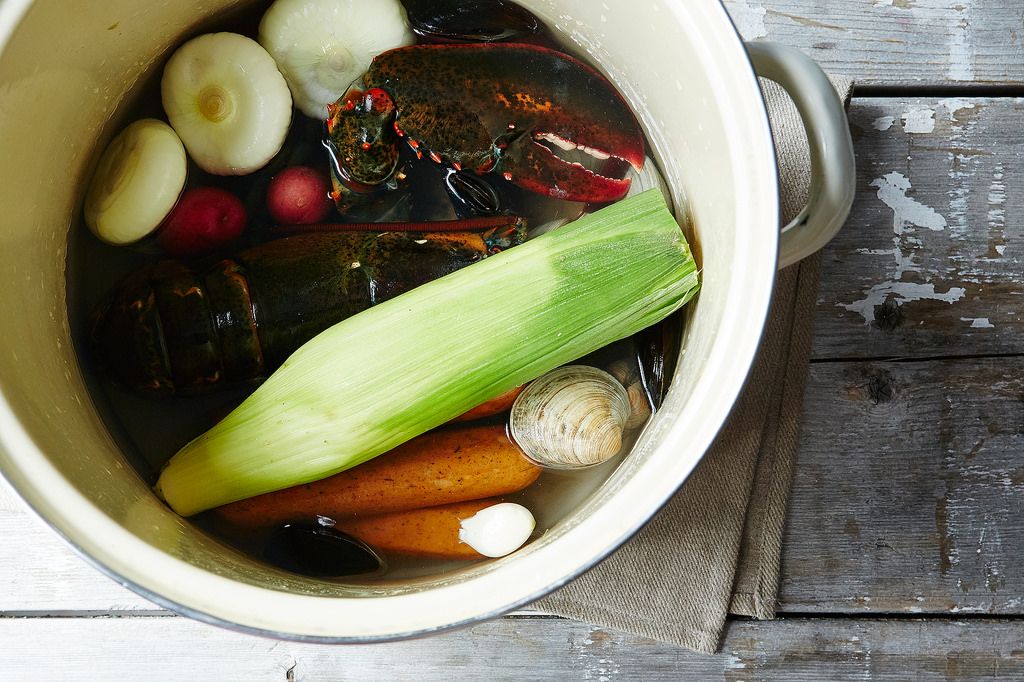
3b. Or, start cooking on the grill.
Using the grill, preheat it to high. To the roasting pan, add potatoes, sausages, and 4 cups salted water. Place the roaster on the grill, close the grill’s lid, and bring the mixture to a boil. Then add lobsters, clams, mussels, potatoes, aromatics, and corn. Cover the pan tightly with foil, close the grill lid, and cook for 20 to 30 minutes.
4. Serve.
To serve, cut the lobsters in half, and use a slotted spoon to transfer the other ingredients to a big platter. Top with cut lobsters. Serve with drawn butter, lemon wedges, and heavy duty cloth napkins.

That’s it, really. The work involved in a kitchen or patio clambake is far less than its traditional inspiration, but the taste is very similar—only there’s less sand in your food (and under your feet).
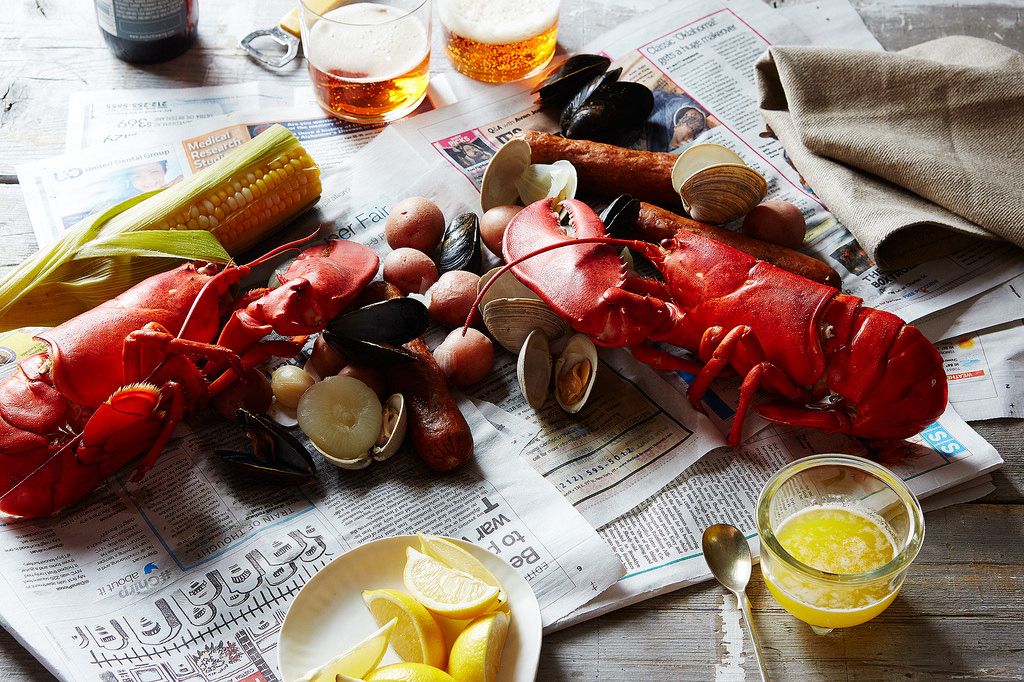
Photos by Mark Weinberg
We're looking for contributors! Tell us what recipe you can make by heart without a recipe at editors@food52.com.

See what other Food52 readers are saying.